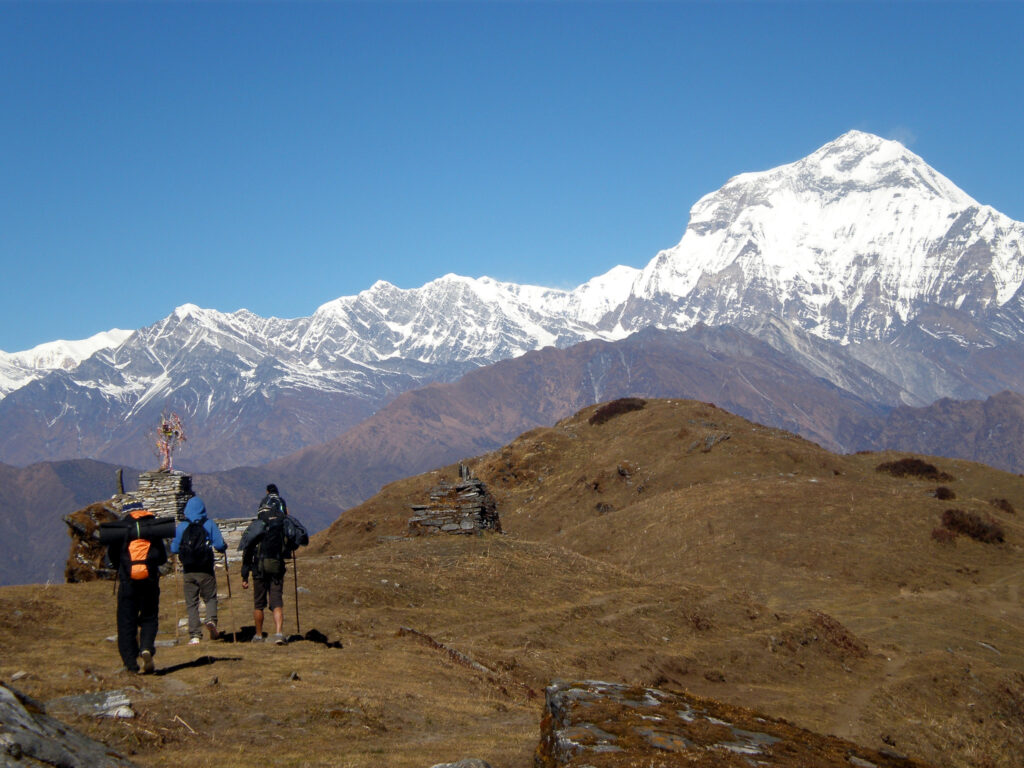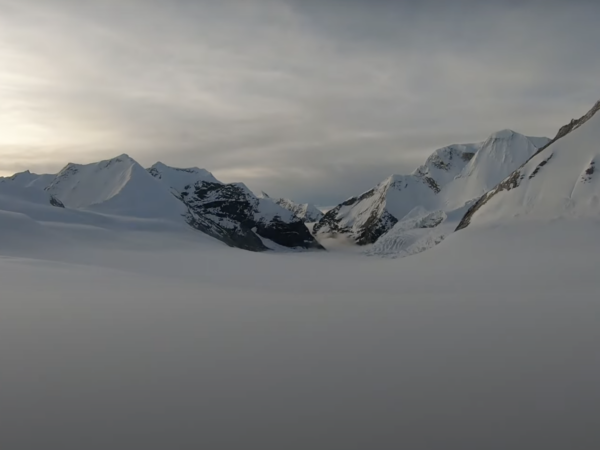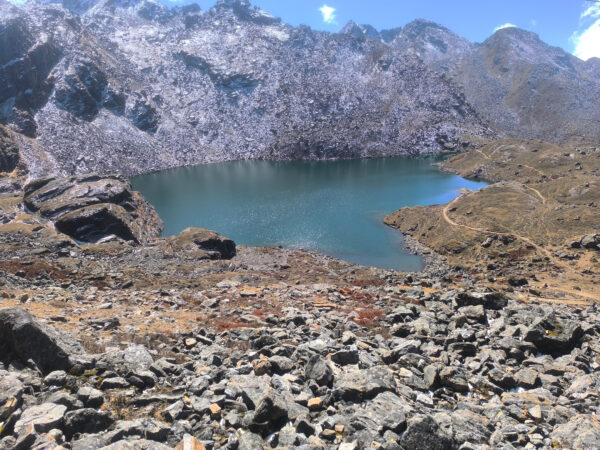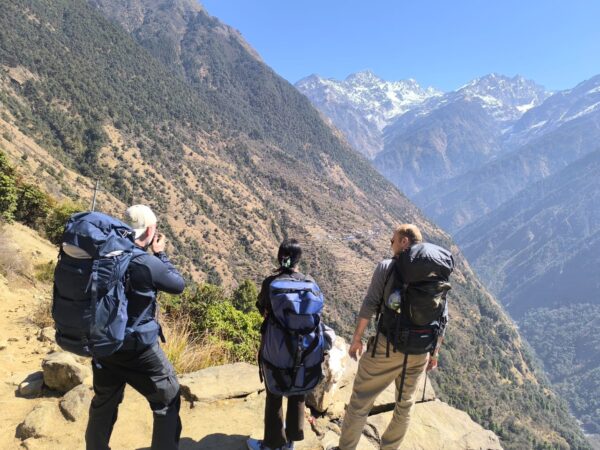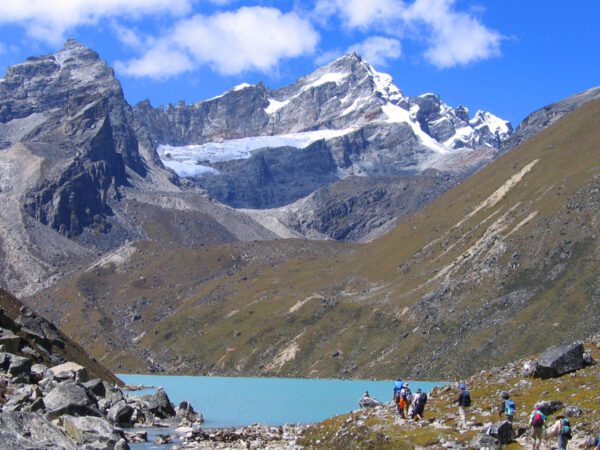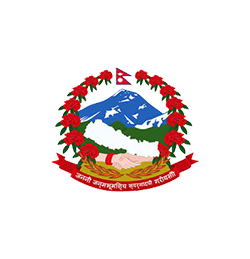Highlights
- Walk through little mountain settlements and deep woodlands
- See Khopra Danda's breathtaking sunrise
- Take an exciting, less-traveled route that passes via a few off-beaten areas
- Discover the sacred Khayer Lake
- Hiking through rhododendron forests is a fun experience, especially in the spring when the blooms are a vivid crimson
- Become acquainted with the way of life and culture of the locals
- Magnificent dawn views of Annapurna and Dhaulagiri from Ghorepani Poon Hill
- Travel across verdant pastures and meadows
- Panorama from Khopra Danda/Ridge in 360 degrees.
- Discover the traditional villages in the area
Overview
Explore the pristine allure of the recently unveiled Khopra Danda With Mohare Hill Trek nestled in the secluded reaches of the Annapurna region. Revel in unspoiled natural vistas and behold a myriad of snow-cloaked peaks while immersing yourself in the rich tapestry of Gurung culture. Khopra Ridge Trek is a best alternative to Annapurna Base Camp Trek in Annapurna Region.
Embark on the moderately challenging Khopra Trek, traversing through Nangi Village (2260m), a serene hamlet ensconced between Beni and Poon Hill, and Khopra, n
estled just north of Ghorepani in the Annapurna expanse. Nangi Village has garnered acclaim for its commitment to sustainability, offering locals vocational training in eco-friendly agriculture and even fostering a cottage industry for paper production. Meanwhile, Khopra Village (3660m) enchants with its remote charm and unparalleled panoramic vistas of the Annapurna and Dhaulagiri Massifs, spanning an impressive 120 kilometers.
Feast your eyes on a breathtaking array of peaks including Nilgiri (7,061m), Bhara Shikhar (7,647m), Annapurna I (8,091m – the 10th highest peak globally), Annapurna II (7,937m), Annapurna III (7,555m), Annapurna IV (7,525m), Machapuchare (6,997m), Dhaulagiri I (8,167m), Hiunchuli (6,441m), Lamjung Himal (6,987m), Nilgiri (7,061m), Manaslu (8,163m), Tilicho (7,134m), and Gangapurna (7,455m).
Encounter a mosaic of cultures as the region is inhabited by diverse castes including Brahmin, Kshetri, Chhetri, and the seven Magar clans, each offering a unique insight into their traditions, customs, and languages. Accommodation along the trek primarily comprises homestays with local families, lodges, and community-run establishments, fostering a sense of authenticity and minimizing commercialization. Traverse trails frequented by yaks transporting goods, with these woolly creatures grazing amidst alpine pastures. A detour from Khopra to Khayer Lake, nestled at 4,500 meters, presents a captivating attraction set against a backdrop of towering snow-capped peaks.
Best Time to Khopra Ridge Trek
Spring (March to May) and autumn (mid-September to November) are the best seasons to trek to Khopra Ridge. During these periods, the weather remains dry and clear, perfect for trekking and enjoying unobstructed mountain views. The days are warm, and the nights are chilly. However, these are also peak seasons, so the trails can become crowded and busy.
The trail to Khopra Ridge winds through a dense forest filled with rhododendron trees, which burst into colorful pink, white, and red blooms in the spring. Strolling past hills covered in wildflowers and rhododendron blossoms against the backdrop of the snowy Himalayas feels heavenly.
Autumn is the most popular season for the Khopra Ridge Trek. Following the end of the wet monsoon season, the skies are clear of dust and impurities, offering crystal-clear views. Trekking in late September or October allows you to experience major Nepalese festivals, Dashain, and Tihar. These Hindu celebrations last for several days and include good food, merry-making, dance, and music in the villages along the trail.
If you prefer to avoid the crowds, consider trekking during the monsoon or winter. Off-season trekking can also bring discounts at teahouses that are mostly empty. However, be prepared for some discomforts, such as rain, leeches, snow, and extreme cold during these times.
Food for Khopra Ridge Trek
During the trek, you will receive three meals a day: breakfast, lunch, and dinner. All meals are served according to the lodge’s menu, which includes Nepali, Tibetan, Indian, and Continental dishes. For breakfast, you can expect items like toast, butter, jam, eggs, sausage, oatmeal, cornflakes, milk, coffee, pancakes, tea, porridge, fruits, and juice. Lunch and dinner options feature rice, vegetable and non-vegetable curries, chapati, noodles, thukpa, momo, steak, porridge, sandwiches, pasta, mashed potatoes, pudding, and more.
Drinking water is available at all the lodges. Just bring a reusable water bottle and refill it as needed. You may also want to carry purification tablets for extra safety. In the cities, you can enjoy a wide variety of cuisines. Kathmandu and Pokhara offer food from all over the world.
Accommodation for Khopra Ridge Trek
During the Khopra Danda Trek, you will stay overnight in a community lodge. These lodges are simple and provide basic amenities. You can choose between single or shared rooms based on your preference. The rooms are small with comfortable bedding, and both shared and private washrooms are available. The dining common area is the warmest place in the lodge, making it a great spot to spend time with fellow trekkers.
In Kathmandu and Pokhara, you will stay overnight in a 3-star or tourist-standard hotel. Depending on your budget, you can opt for a luxurious stay or choose a hostel for a more budget-friendly option. The hotels offer a full range of facilities.
Outline Itinerary for Khopra Ridge Trek
Day 1: Drive from Kathmandu to Pokhara (8,50m)
Day 2: Drive from Pokhara to Ghandruk (1940 M) 6,365 ft and Trek To Tadapani
Day 3: Trek To Bayeli Kharka (3450 m)
Day 4: Trek To Khopra Danda / Ridge (3,660 m)
Day 5: Day Hike To Khayar Lake – Khopra Danda. (4,600m)
Day 6: Trek from Khopra Danda to Swanta (2270m)
Day 7: Trek from Swanta To Ghorepani (2,860m)
Day 8: Hike up to Poon Hill (3,210m) & trek to Nayapul & drive to Pokhara
Day 9: Pokhara to Kathmandu
Khopra Ridge Trek – A Breathtaking 9-Day Adventure in the Himalayas - Itinerary
Drive from Kathmandu to Pokhara (8,50m)
Our adventure starts with a scenic 6-7 hour drive to the Pokhara Valley, where we'll be greeted by the serene Phewa Tal (lake). Afterward, we'll check into a hotel conveniently located near Phewa Tal. Lakeside offers a plethora of attractions, including charming shops, lively bars, and delightful restaurants, ensuring there's something for everyone to enjoy.
Drive from Pokhara to Ghandruk (1940 M) and Trek To Tadapani
Today, we start our journey from Pokhara to Ghandruk Village. After a refreshing lunch break, we embark on our trek towards Tadapani. Our path winds through enchanting oak and rhododendron forests, offering breathtaking views of Machapuchare (Fishtail), Annapurna South, Annapurna II, Annapurna III, Annapurna IV, and Lamjung Himal along the way.
Trek To Bayeli Kharka (3450 m)
To fully experience the breathtaking sunrise amidst the ever-shifting morning hues, an early start is essential. Following that, we embark on a trail that winds through a rhododendron forest until reaching Bayeli Kharka. Along this route, you'll be treated to stunning vistas of the Annapurna Ranges. Once at Bayeli, you'll be rewarded with panoramic views of Mt. Dhaulagiri, the world’s 7th highest peak.
Trek To Khopra Danda / Ridge (3,660 m)
Our trek begins with a descent to Chhsitibang Village before ascending to Khopra Ridge. Along the way, we can expect to encounter Nepal’s national bird, the pheasant, yaks grazing in alpine meadows, and Himalayan Tahr. Once on the ridge, breathtaking views of Mt. Dhaulagiri, Annapurna I South, Tukuche Peak, Dhampus Peak, Mt. Nilgiri, and other majestic snow-capped mountains await.
Our trek begins with a descent to Chhsitibang Village before ascending to Khopra Ridge. Along the way, we can expect to encounter Nepal’s national bird, the pheasant, yaks grazing in alpine meadows, and Himalayan Tahr. Once on the ridge, breathtaking views of Mt. Dhaulagiri, Annapurna I South, Tukuche Peak, Dhampus Peak, Mt. Nilgiri, and other majestic snow-capped mountains await.
Day Hike To Khayar Lake - Khopra Danda
Today, we'll trek to Khayer Lake, situated at an elevation of 4,600 meters (15,092 feet). The stunning, crystal-clear lake offers breathtaking views amidst the high mountain terrain. Later, we'll return to Khopra Ridge for our overnight stay.
Trek from Khopra Danda to Swanta (2270m)
Today will be relaxed as we journey to Swanta, renowned for its cheese factory where visitors can tour and taste various cheeses, including yak cheese. We'll spend the night here.
Trek from Swanta To Ghorepani (2,860m)
Today, we embark on a trek towards Ghorepani, famous for its breathtaking mountain vistas, particularly at sunrise and sunset. Our journey begins with a trek to Chitre Village, followed by the main trail leading to Ghorepani. Along this route, we'll be treated to panoramic views of Mt. Dhaulagiri, Machapuchare (Fishtail), Annapurna South, and other majestic snow-capped peaks. For those eager to capture the sunset in all its glory, there's also the option to hike up to Poon Hill, renowned for its spectacular sunset views.
Hike up to Poon Hill (3,210m) & trek to Nayapul & drive to Pokhara
Poon Hill is renowned for its breathtaking sunrise views, offering some of Nepal's finest vistas of the nearby Himalayan Mountains. The panoramic views encompass a stunning lineup of peaks including Dhaulagiri (8167m), Annapurna I (8091m), Annapurna II (7937m), Annapurna III (7855m), Annapurna IV (7525m), Annapurna South (7219m), Nilgiri (6940m), Tukuche (6920m), Varaha Shikhar (7847m), and Lamjung Himal (6931m). Following a memorable photo session, we'll return to Ghorepani for breakfast before continuing to Nayapul and driving onward to Pokhara.
Drive from Pokhara to Kathmandu
After enjoying breakfast at the hotel in the morning, embark on an engaging journey towards Kathmandu, a drive spanning over five hours. Along the way, you'll traverse through picturesque farm villages and towns, offering glimpses of the majestic snow-capped mountain range.
As the journey progresses, you'll ascend to reach the highest point overlooking the Kathmandu Valley. A brief drive from there will bring you to your hotel. The afternoon invites you to indulge in personal activities and shopping at your leisure.
Inclusions
What's included
- Airport transfers - pickup and drop off
- Hotel in Pokhara with breakfast included
- An Experience English speaking guide
- Porter to carry your luggage (1 porter for every 2 trekkers)
- All Meals and Teahouse accommodation during the trek
- Kathmandu - Pokhara - Kathmandu Deluxe Tourist Bus
- All required trekking permits (Annapurna Conservation Area Entry Fee and TIMS Card)
- Guide insurance with food and accommodation
- Basic Medical kits
- Farewell dinner
- Emergency Helicopter Evacuation Service Arrangement Only (should cover by your travel insurance)
- All required paper works and government taxes
What's not included
- International Flight
- Nepal Travel Visa Fee
- Personal Medical and Travel insurance (Should cover helicopter evacuation)
- Guide, Porter and Driver tips
- Personal Gears (equipment)
- Personal bill
- Lunch and Dinner in Kathmandu
- All other personal expense of beverages (hard and soft drinks)
- All other things not mentioned in the inclusion.
Equipment
Recommended Trekking Gears
Clothing
- Base Layers (Moisture-Wicking)
- Thermal tops and bottoms (polyester or merino wool)
- Lightweight long-sleeve shirts
- Insulating Layers
- Fleece jacket or pullover
- Down jacket (for high-altitude treks)
- Warm sweaters
- Outer Layers (Shells)
- Waterproof and windproof jacket (Gore-Tex or similar)
- Waterproof pants
- Trekking Pants
- Quick-dry pants
- Convertible hiking pants (zip-off into shorts)
- Trekking Shirts
- Lightweight and breathable T-shirts
- Long-sleeve shirts with UV protection
- Headwear
- Wide-brim hat or cap for sun protection
- Warm beanie for cold temperatures
- Buff or scarf for dust and wind
- Gloves
- Lightweight trekking gloves
- Insulated gloves for higher altitudes
- Socks
- Moisture-wicking trekking socks
- Thermal socks for colder regions
- Footwear
- Sturdy and waterproof trekking boots (well broken-in)
- Comfortable sandals or camp shoes (for evenings/rest days)
- Gaiters (optional, for snow or muddy trails)
Backpacks & Bags
- Backpack
- 40-50L capacity for multi-day treks
- Comfortable straps and rain cover
- Daypack
- 20-30L for short treks or carrying essentials during the day
- Duffel Bag
- Used if porters are carrying your gear (for organized treks)
- Dry Bags
- To keep electronics and clothes dry in wet conditions
Sleeping Gear
- Sleeping Bag
- 4-season sleeping bag (rated for -10°C to -20°C for high-altitude treks)
- Sleeping bag liner (optional, for extra warmth and hygiene)
- Sleeping Pad (if camping)
- Lightweight and inflatable or foam pads for comfort
Trekking Accessories
- Trekking Poles
- Adjustable and lightweight poles (essential for steep ascents/descents)
- Water Bottle/Hydration System
- Insulated bottle (to prevent freezing at high altitudes)
- CamelBak or similar hydration reservoir
- Water Purification
- Water filters, purification tablets, or UV sterilizers
- Sunglasses
- UV protection (Category 3 or 4 for snowy conditions)
- Headlamp
- With spare batteries (essential for early morning or late-night treks)
- Multi-tool or Knife
- For various small tasks
- First Aid Kit
- Bandages, blister patches, antiseptic wipes, painkillers, Diamox (for altitude sickness), etc.
- Lip Balm
- SPF-protected to prevent chapping
- Sunscreen
- High SPF for UV protection at higher altitudes
- Personal Toiletries
- Biodegradable soap, toothpaste, toothbrush, quick-dry towel, wet wipes, and toilet paper
Optional but Useful Items
- Camera
- To capture the stunning scenery (extra batteries and memory cards are a must)
- Snacks
- Energy bars, trail mix, or chocolate for quick energy boosts
- Power Bank/Solar Charger
- For charging devices in remote areas
- Books or E-Readers
- For downtime during rest days
- Earplugs
- To block out noise in lodges or camps
- Notebook/Journal
- To record your trek experience
Clothing Packing Tips
- Layering is key: It helps regulate your body temperature and adapt to changing weather.
- Avoid cotton: It retains moisture and dries slowly, which can lead to discomfort or hypothermia.
- Pack light: Only carry what is absolutely necessary to avoid unnecessary weight.
Gear Rentals in Nepal
If you're worried about carrying too much gear, trekking hubs like Kathmandu and Pokhara offer trekking equipment rentals and sales. You can find items like sleeping bags, down jackets, and trekking poles at reasonable prices. However, ensure you check the quality before renting.

